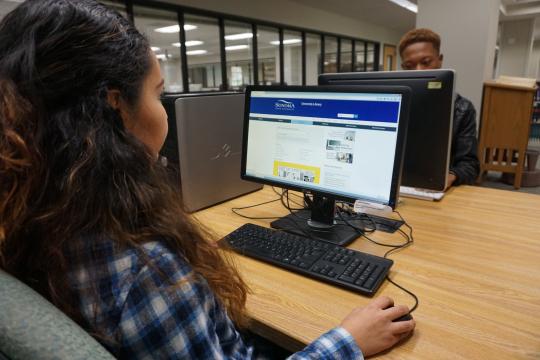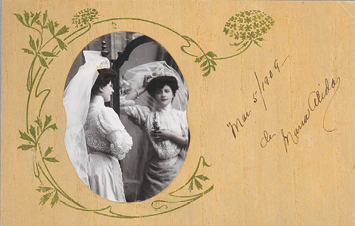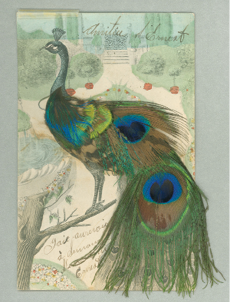Since joining the Hyperlinked Library, I’ve found myself pulled to the significance of transparency in librarianship not just for LIS professionals, but more importantly…for our users! Transparency is concerned with openness and sincerity, but what exactly does that mean or look like in librarianship? “The transparent library contains three key elements: open communication, adapting to change, and scanning the horizon” (Casey & Stephens, 2007). Communication, I believe, is the key to success across all professions—not just LIS. Communication is a crucial element that cannot be one-sided, secretive, nor overlooked. Change, as we’ve come to know in LIS studies, is scary but nonetheless inevitable; as librarians, we have the utmost responsibility to make changes to our organization that will fulfill user experience. I find that change connects well with Casey & Stephens’ (2007) discussion of scanning the horizon, in which change doesn’t appear out of nowhere—the changes we make need to have reasoning behind them and are a direct response to the current environment of our organization. Below, I will examine how transparency can impact user experience.
Before all else, LIS professionals must acknowledge and remember they’re not the user. Once we accept our role in the library, we can work to enhance our performance and bring forward the services our users need and/or didn’t know they needed. This can be in the form of communicating with users in real life or online, cross-training staff, listening and responding to both staff and user ideas, forming/attending community events to form connections with the public, and bringing different departments together to plan a project as one (Casey & Stephens, 2007). This importance of the user is also expressed in the American Library Association’s (2021) Code of Ethics “We provide the highest level of service to all library users through appropriate and usefully organized resources; equitable service policies; equitable access; and accurate, unbiased, and courteous responses to all requests.” To provide for all users, however, we of course need to listen and respond to all users in our community—regardless if they use the library or not. Transparency can appear in numerous ways, which I will now examine.
Again, adapting to change is an essential element in accomplishing transparency and user satisfaction—this is clear in the recent trend of eliminating late fees. In Library Journal’s 2022 Fines and Fees Survey, it was found that “Respondents who chose to eliminate fines listed various grounds for their decisions, including opportunities to foster good will and improve customer service, promote social justice, and adhere to their mission statements and directives” (Gerber, 2022). In response to cutting these fees, which are simply barriers in disguise, LJ’s survey also discovered that users belonging to an organization who eliminated fees had an increase in “patron satisfaction and participation” (Gerber, 2022). Here, we see transparency in action. Changes that come to the library need to have a purpose—in this case, the purpose is to dismantle the idea of fining and “getting” users while removing shame. This is a major step in creating connections with community members, unlike the 2015 Seattle Public Library’s rebrand attempt which led to financial disaster. While rebranding is appropriate, and should be encouraged if needed, libraries need to consider their users every step of the way—something SPL didn’t do when wasting nearly $2 million and wasn’t being led by user ideas nor going toward beneficial user services (Kenney, 2015). Whether in the form of eliminating late fees or rebranding, the element of open communication in changing an organization’s environment is essential to achieve transparency.
Diving deep into transparency this week has reaffirmed my faith that LIS professionals are not the user. Just because I’m not the user, however, that doesn’t mean real change isn’t within reach. As an aspiring LIS professional, I’ve come to realize that I’ll be the one who makes open and sincere communication possible. I believe transparency in libraries can only be achieved when both staff and users have the chance to be honest with one another; it would be my responsibility to create an environment where that can occur. Despite the challenges that may come with it, adapting to change is necessary. Overall, transparency is something all LIS professionals must strive toward in their organization.
References
American Library Association. (2021, June 19). ALA code of ethics. https://www.ala.org/tools/ethics
Casey, M., & Stephens, M. (2007, April 1). Introducing the Michaels. TTW | Tame the Web.
Casey, M., & Stephens, M. (2007, December 15). A road map to transparency. TTW | Tame the Web. https://tametheweb.com/2007/12/15/a-road-map-to-transparency/
Gerber, A. (2022, September 28). Fine farewells: LJ’s 2022 fines and fees survey. Library Journal. https://www.libraryjournal.com/story/Fine-Farewells-LJs-2022-Fines-and-Fees-Survey
Kenney, B. (2015, November 13). Lessons from Seattle’s failed bid to rebrand its public library. Publishers Weekly. https://www.publishersweekly.com/pw/by-topic/industry-news/libraries/article/68666-brand-awareness-lessons-from-seattle-s-failed-bid-to-rebrand-its-public-library.html


